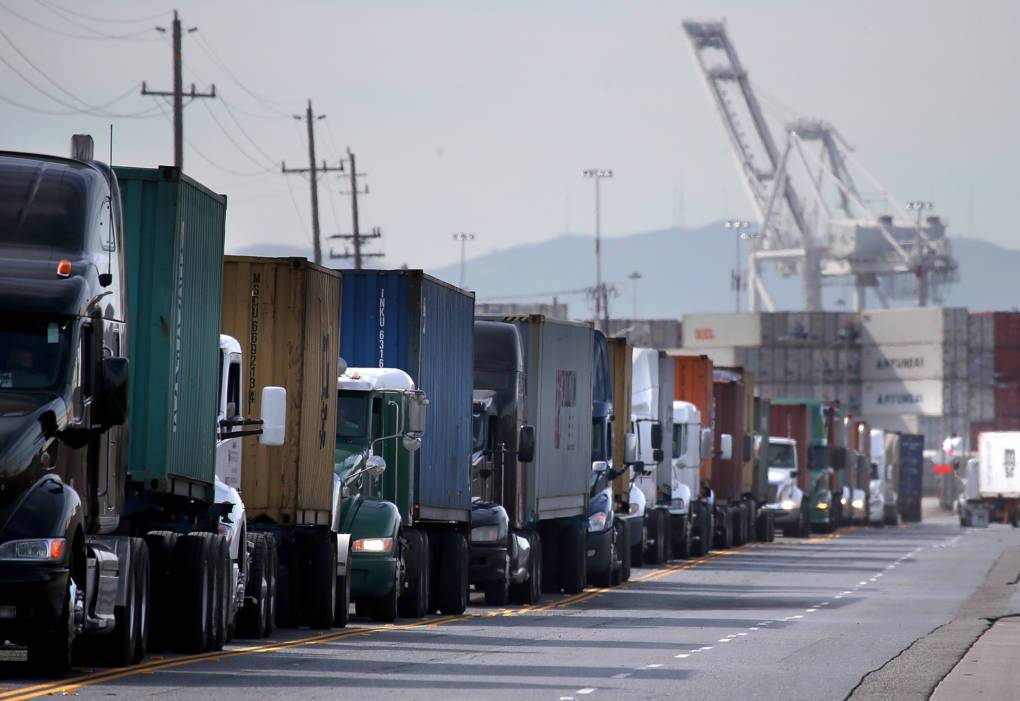That question prompted Gordon to embark on a decades-long effort to clean up the environmental toxins around her, co-founding an organization called the West Oakland Environmental Indicators Project.
For years, West Oakland has been the location of heavy industry and discriminatory policies such as redlining. This history has resulted in West Oakland residents, primarily people of color, being exposed to more pollution than other neighborhoods in the Bay Area.
The air in West Oakland contains some of the highest levels of toxic diesel particulates in the region. The California Environmental Protection Agency has designated the area as a “disadvantaged community,” meaning it’s disproportionately burdened by pollution that can lead to negative health impacts. West Oakland has higher rates of asthma, cardiovascular disease and premature death related to air pollution than other places in the Bay Area.
For the 50th anniversary of Earth Day last week, KQED asked Gordon and her colleagues in the environmental justice movement to reflect on the changes they’ve seen in their time fighting for a cleaner West Oakland.
Brian Beveridge, a colleague of Gordon’s, says the community has learned different political strategies over the years.
Before the 1989 Loma-Prieta earthquake, the Cypress Freeway bisected West Oakland, dividing the neighborhood and subjecting the community to the pollution that comes with a heavily used highway. When the freeway was damaged in the quake, the community lobbied to rebuild it in an area to the west, rejoining the divided streets. “Community members came in the room and fought for what they needed against the big agencies,” including Caltrans, Beveridge said.
Over the past several decades, the West Oakland Environmental Indicators Project and other grassroots efforts have threatened lawsuits and brought actions against the city and Port of Oakland, including a 2017 civil rights complaint about what activists called disregard for the health of West Oakland residents.
But Beveridge said that through the years the group “realized we can’t just sue all the time. We have to find a way to have a dialogue and change the dynamic of the conversation.”
He said his group now works more collaboratively with government and private groups, and that the attitude of these larger organizations toward West Oakland residents has changed.
“These institutions have begun to realize that the residents have an intrinsic knowledge of their own environment. We are now treated as peers by experts and Ph.D.s and scientists,” Beveridge said.
In the Beginning
Eric Arnold of Oakland nonprofit Urban Releaf says Gordon and others started engaging in environmental justice work in the 1990s, back before it was well-known.
Focusing environmental work on people and communities, instead of nature and conservation, “was kind of a radical idea,” Arnold said. “But now, thanks to the work of activists and advocates, there is substantial policy, substantial legislation.”
Arnold cited the passage of Assembly Bill 32, the California Global Warming Solutions Act of 2006, as a watershed moment. The bill, which requires the reduction of greenhouse gas emissions, called for an Environmental Justice Advisory Committee to advise the state in implementing the legislation.
Naming the movement like that “codified it” and “set a baseline for environmental justice,” Arnold said.
Another big development in the movement came in 2012, when Gov. Jerry Brown signed Senate Bill 535 into law, requiring the investment of cap-and-trade revenues in disadvantaged communities.
Arnold said the activism in the Bay Area helped push some of these measures through. “West and East Oakland had been some of the meccas for the environmental justice movement, not just in California, but the entire country,” he said.
He also credited Gordon’s work for pushing the state to collect and share data on pollution.
The West Oakland Environmental Indicators Project has also participated in gathering data independently from the state, in a partnership with the advocacy group Environmental Defense Fund, Google Maps, Aclima and the University of Texas at Austin. The project, which attached Aclima sensors to Google Street View cars, measured nitric oxide, nitrogen dioxide and black carbon — pollutants that come from car exhaust. In June 2017, the results were published in the journal Environmental Science & Technology. The findings showed that air pollution varied widely within neighborhoods and individual blocks.
In 2018, the Port of Oakland reported that diesel particulate emissions were down 81% from 2005. But Ms. Margaret Gordon said health has not improved by a commensurate amount, and the gains have not been enough to combat decades of pollution in West Oakland’s air, soil and water.
After all, Gordon got into this fight because of health. These days, she’d like to see some new data. “How many people still have ended up in the hospital?” she said.

